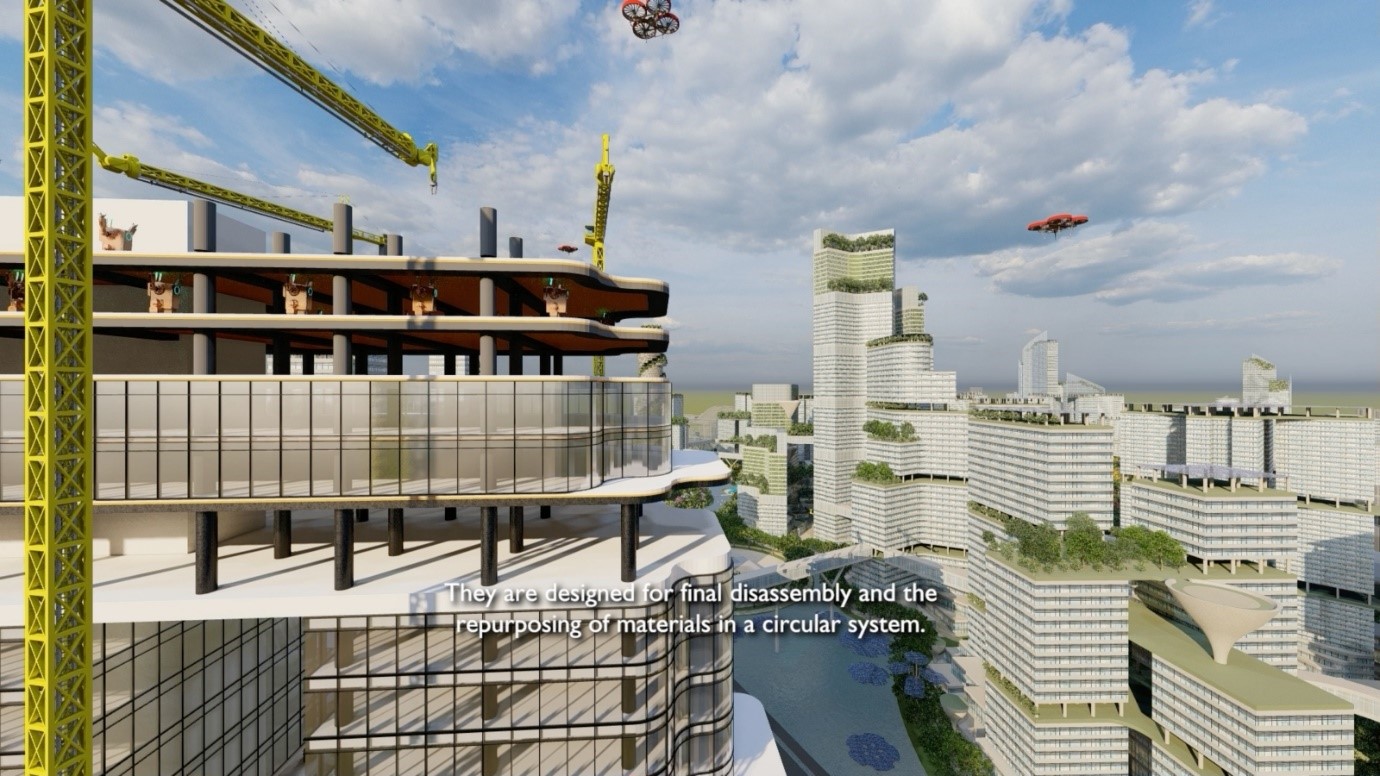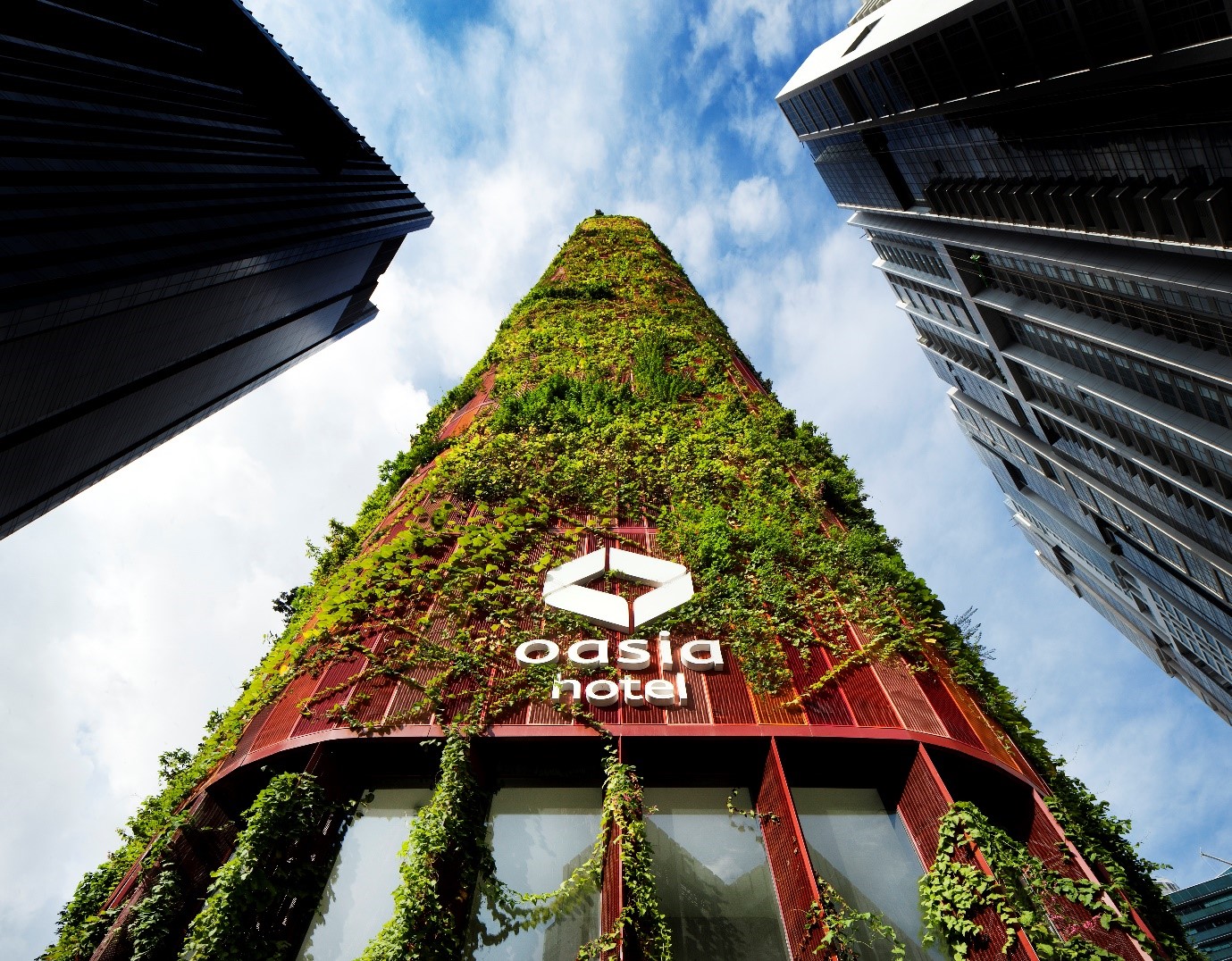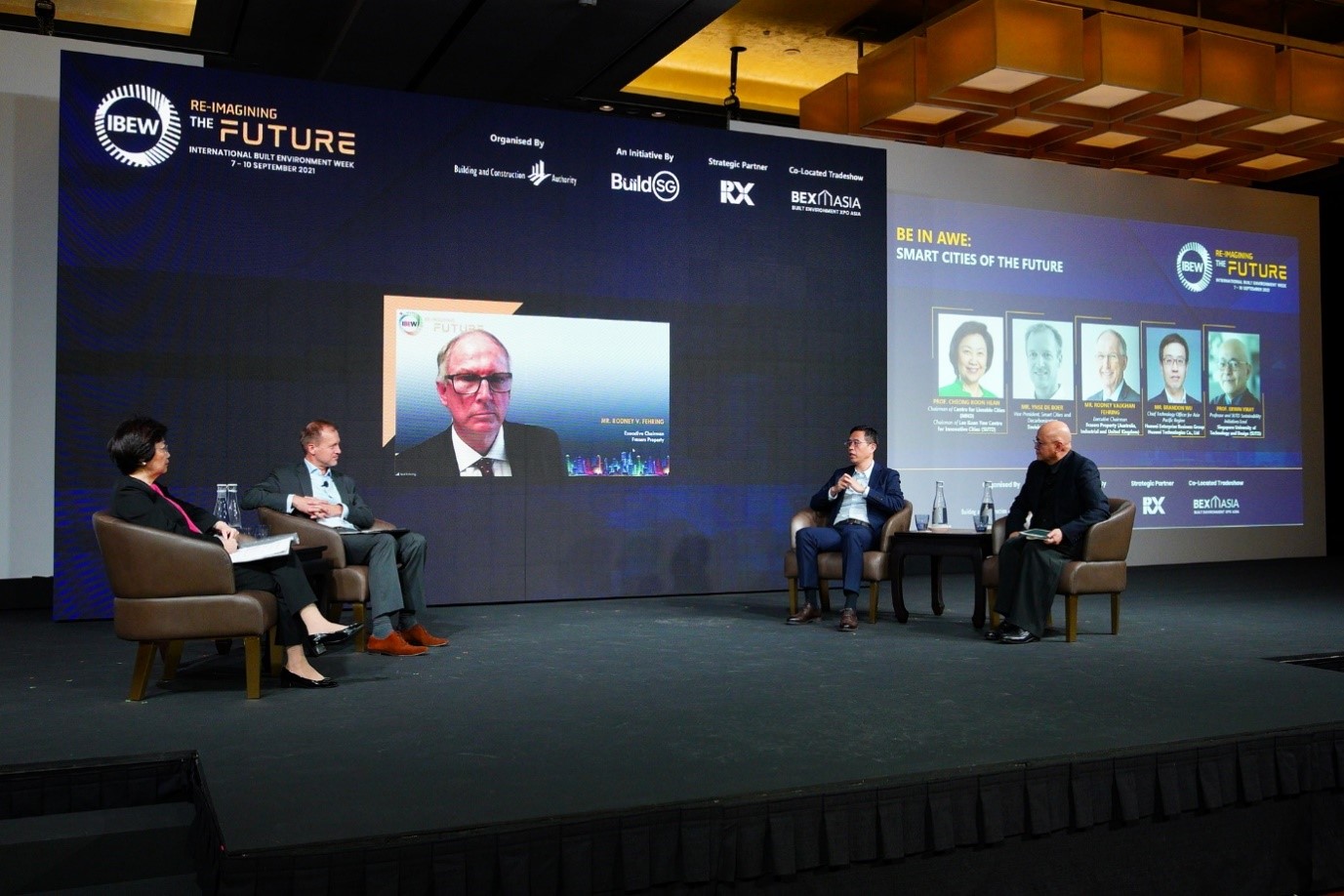Over the next 80 years, Singapore’s landscape is likely to be spectacularly transformed through nature. Towering net-zero energy skyscrapers double up as beautiful vertical gardens, while nature dominates the city’s surface through forests and small rivers.
Lusher and greener than ever, the country becomes self-sufficient in renewable energy and is completely carbon neutral. This is a place where humans and nature thrive together in the future.
It is part of a biophilic vision that WOHA Architects has mapped out for 22nd century Singapore, seen through a video that the company presented on Day 3 of the International Built Environment Week.
|
|

Singapore 2100 is WOHA’s vision of a resilient, sustainable city of the future in which humans and nature can co-exist in regenerative, circular systems. View the full video here.
Credit: WOHA
|
|
Achieving this vision is gaining urgency as the world seeks to counter the climate change crisis. “One very important point is that we do need to see ourselves as part of nature, for the human species to survive,” said Mr Wong Mun Summ, Founding Director of WOHA Architects.
One very important point is that we do need to see ourselves as part of nature, for the human species to survive
- Mr Wong Mun Summ
Mr Wong was speaking at a plenary discussion that saw thought leaders of the Built Environment (BE) sector share their views of what Singapore’s urban approach should be like in the decades to come. All agreed that the regeneration of nature in the city should be a key focus moving forward.
In fact, the BE sector needs to form a partnership with nature. “The human build and the natural are not two separate things – they reinforce each other,” said Dr Nirmal Kishnani, Associate Professor at the National University of Singapore’s School of Design and Environment.
Nature’s positive impacts
The benefits of nature are multifold, which can be experienced in some of Singapore’s green buildings.
Mr Wong cited the Oasia Hotel Downtown as an example, which has cooling properties thanks to its thick blanket of green foliage. Thermal imaging of the building showed that it was 50 per cent cooler than the adjacent steel and glass tower. Such buildings also enhance the biodiversity of the area.
|
|

Oasia Hotel Downtown
Credit: Patrick Bingham-Hall
|
|
More of these green buildings and urban planning are required – fast. “The 22nd century is not that far away,” said Dr Shawn Lum, Senior Lecturer at the Asian School of the Environment at the Nanyang Technological University.
“We know enough now that we can do it. It’s a matter of sitting down, planning it and getting all sectors to work together on it.”
Technology, policy changes and a mindset shift
Three things will be vital in turning this green vision into reality.
First, technology will be a key driver, noted Mr Shonn Mills, Global Director – High Rise, at engineering firm Ramboll Singapore. “We need next-level thinking and new tools,” he said, citing the use of augmented design to produce innovative solutions.
Mr Neil Yong, Executive Director at construction firm Woh Hup, also pointed out that the BE sector should not shy away from trying new things. “I’m sure there’s going to be a lot more new technologies to be embraced,” he said.
Technology also aligns perfectly with Singapore’s goal of becoming a Smart Nation, which will help pave the way for a better living environment too.
“Digital technology helps to develop more sustainable cities and stretch your sustainable targets,” said Professor Cheong Koon Hean, Chairman of both the Centre for Liveable Cities (MND) and the Lee Kuan Yew Centre for Innovative Cities.
Speaking at another panel that discussed how future cities should be built smarter and more sustainable, Prof Cheong referred to how computer modelling has identified hot spots in Singapore – leading to more greenery being planted in these areas to combat the urban heat island effect.
|
|
 BE IN AWE: Smart Cities of the Future BE IN AWE: Smart Cities of the Future
|
|
At the same panel, Mr Ynse De Boer, Vice President of Smart Cities and Decarbonisation at technology firm Envision Digital, also observed that net-zero cities would require integrated renewable energy systems of unprecedented scales.
“If you look at cities today, they’re a fragmented patchwork of systems and technologies,” he said. “There’s clearly a need to integrate all parts of the value chain, and leverage on Artificial Intelligence to manage and monitor all of that in real time.”
Second, the right policies need to be in place. Describing policies as “triggers of change to drive development”, Dr Kishnani said: “The pace at which we have to confront this challenge needs to be top-down…we need stronger policy structures.”
Finally, there needs to be a reframing of values, emphasised Mr Wong. This means shifting from a dollars and cents mindset to one of sustainability. “It’s no more about wealth creation, but a more holistic outlook on wellness in life,” he remarked.
Although the changes will take time, he and other panellists expressed confidence that Singapore will get there.
“The built environment doesn’t change overnight. It needs to be transformed and it’ll take a couple of generations,” he said. “The vision is very doable. We just need to create the mechanisms and policies for it to work.”